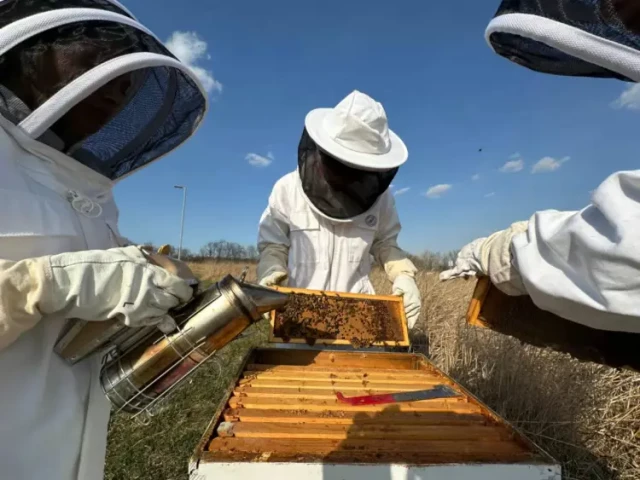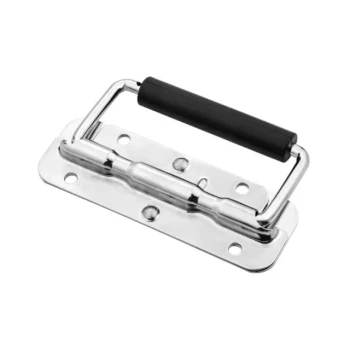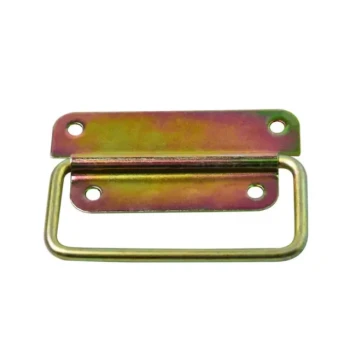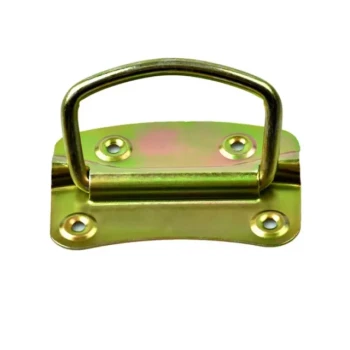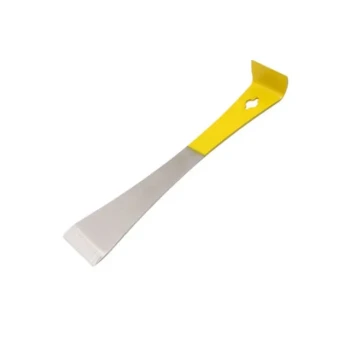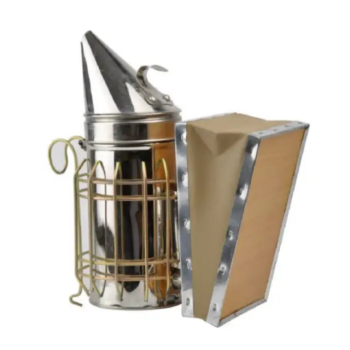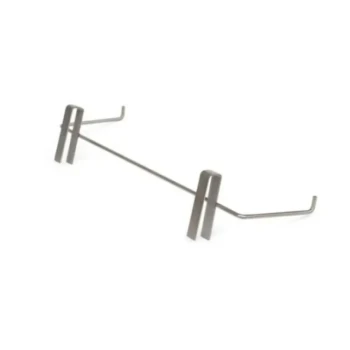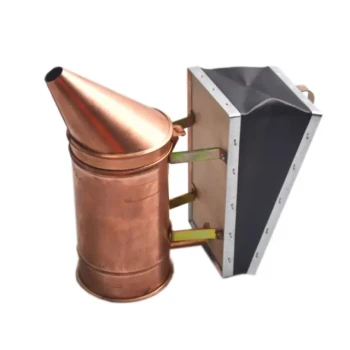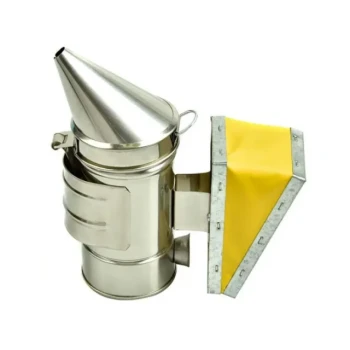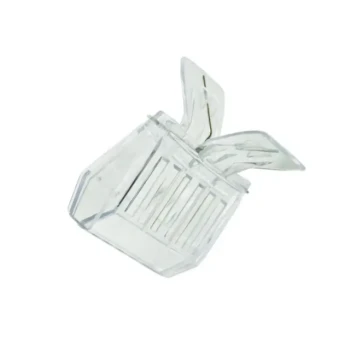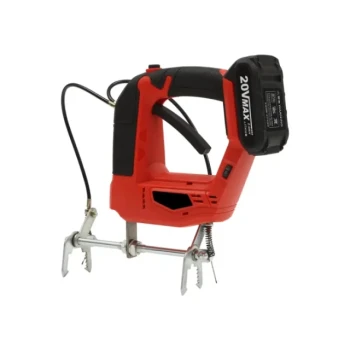When inspecting hives, beekeepers need gear that balances safety, comfort, and practicality. While full suits offer complete coverage, jackets provide targeted protection with better mobility—especially in warm climates. Here’s how to determine which option suits your beekeeping style.
Protection Without Compromise
Beekeeping jackets and full suits both defend against stings, but their coverage differs significantly:
-
Full suits shield the entire body, including legs and ankles, with elastic seals to prevent bee entry. Ideal for:
- Frequent hive inspections
- Swarm management
- Beginners prioritizing maximum safety
-
Jackets protect the upper body (torso, arms, and head) while leaving legs exposed. Best for:
- Quick hive checks
- Beekeepers in controlled environments
- Hot weather work, as they’re less insulating
Key Insight: Research shows full suits reduce sting penetration by nearly 100% compared to jackets, but jackets suffice for low-agitation hives or experienced beekeepers.
Heat Management and Mobility Advantages
Ventilation and weight critically impact comfort during long apiary sessions:
Triple-Layered Ventilation
Modern jackets often use breathable 3-layer mesh, which:
- Allows airflow to evaporate sweat
- Reduces heat stress without sacrificing sting resistance
- Weighs significantly less than traditional suit materials
Mobility Trade-Offs
- Full suits can restrict movement when bending or lifting frames.
- Jackets enable quicker adjustments but require separate leg protection (e.g., thick pants) for full coverage.
Pro Tip: For summer inspections, many commercial beekeepers opt for ventilated jackets to avoid overheating.
Key Features for Long-Term Usability
Prioritize these elements in either gear type:
-
Zipper Durability
- Rust-proof, heavy-duty zippers prevent bee intrusions. Jackets often feature fewer zippers than suits, simplifying wear.
-
Adjustable Seals
- Elastic wrists/ankles (suits) or drawstring hoods (jackets) keep bees out.
-
Veil Compatibility
- Detachable veils in jackets allow easy cleaning or replacement.
-
Material Longevity
- Look for reinforced knees (suits) or shoulder panels (jackets) to resist wear.
Choosing the Right Gear for Your Apiary
Ask yourself:
- How often do I inspect hives? Frequent beekeepers may prefer suits; occasional hobbyists might prioritize jackets.
- What’s my local climate? Hot regions favor ventilated jackets; cooler areas suit full coverage.
- Am I handling aggressive bees? Defensive colonies warrant full-body protection.
Final Thought: The best gear aligns with your routine—whether it’s a jacket’s agility or a suit’s comprehensive shield.
Ready to upgrade your beekeeping gear? Explore HONESTBEE’s durable jackets and suits, trusted by commercial apiaries for their sting-proof designs and climate-adaptive materials. Shop Now to find your perfect fit.
Products You Might Be Looking For:
View ventilated beekeeping jackets
Explore full-body beekeeping suits
Visual Guide
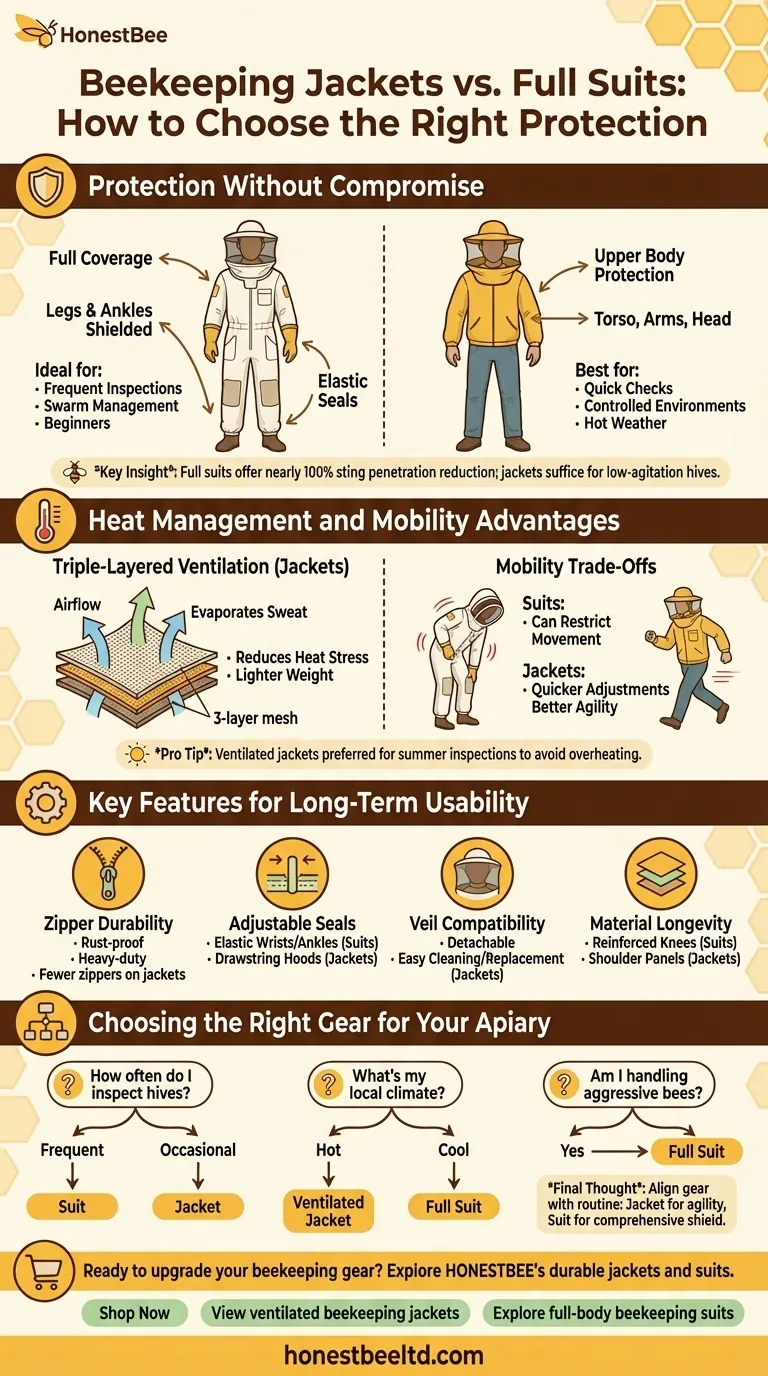
Related Products
- Beekeeping Jacket with Hood and Veil for Beekeepers
- Economy Polyester Beekeeping Jacket with Veil and Hat
- Cotton Beekeeping Suit and Round Hat with Veil Bee Keeper Protective Gear
- White Beekeeping Protective Suit and Hat with Fencing Veil for Beekeepers
- Heavy Duty Cowboy Beekeeper Hat with Visibility Veil Outdoor Professional Beekeeping Protective Gear
